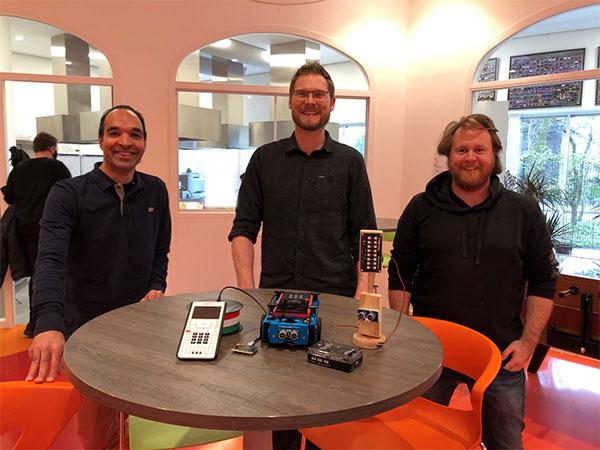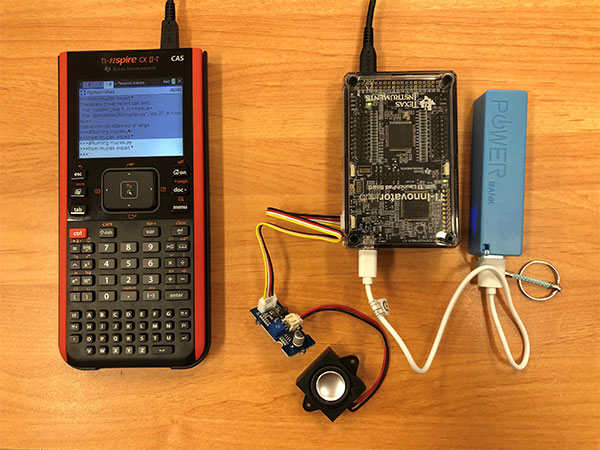Computational Thinking for all students Dutch Leo Kanner school
The aim of the computational thinking (CT) strategy at the Leo Kanner secondary school in Leiden, Netherlands, is to teach children to approach problems logically and to use digital tools to solve them. To this end, the school organised a pilot programme using TI-Nspire™ CX technology. “An important plus is that you learn the basics of computational thinking through this technology,” said teacher Zeno van der Zalm. “We started small, but we are now in the phase where we are involving more teachers and subjects in the trajectory.”
Mr Zeno
Leo Kanner College offers secondary education at all levels to some 300 students with an autism spectrum diagnosis. Zeno van der Zalm teaches a range of science subjects and is part of the CT trajectory team alongside IT coordinator Harro Beek and maths teacher Gertjan Schreur.
“One of our school’s core values is that as a team we focus on what the students need. We work closely together, we talk with the students a lot, and we are approachable,” said van der Zalm. “The main thing is that we make contact and that we discuss topics together. That is why the lines between teachers and students are short and why the students call us by our first name. But it is ‘Mr Zeno!’”

Technology pilot
The school decided to get involved with teaching this 21st-century skill when computational thinking became part of the ongoing national debate about education reform. “The first thing we did was opt for Python as the programming language within our science work group,” said Harro Beek. “Texas Instruments’ offer to secondary schools via a computer science platform to let them try out the technology came at precisely the right time. We could use 16 TI-Nspire™ CX II-T graphing calculators, the TI-Innovator™ Hub microcontrollers and the robot vehicle TI-Innovator™ Rover. This school year we set up a pilot, and now we are looking at how we can further roll out the CT programme.”
Meeting educational targets with a classic approach
The teachers adopted a classic approach to teaching the students to programme in Python. “All of them start out with their graphing calculator, and we go through the programme step by step,” said Gertjan Schreur. “TI’s software and devices allow us to take a structured approach. We prepare everything, and at each step we explain what is going on while the students follow the whiteboard. The menu structure and the syntax directions help the students learn to work with Python quickly. Another advantage of the handheld is that students are less liable to be distracted because they are only using one screen. The classic approach does not lead to a difference in educational achievement. Everyone ends the lesson with a working product, and all students reach the target.”

Thinking like a computer
The teachers have noted that the students enjoy what they do, and they are proud that this is a successful experience for all of them. “If you achieve something with code you wrote yourself, it gives you a lot of insight; you learn how to think like a computer that gives output. And the further they advance, the more tangible this becomes. They have, for example, written code to control LED lights via the TI-Innovator™ Hub. They’ve also used their own Python script to control a speaker and play music. It was great to actually listen to the song our music teacher had written for this assignment,” said Gertjan Schreur.
Interdisciplinary programme
The music project is an illustration of how computational thinking operates in other parts of the curriculum. “Teachers from different subjects are involved, from maths and physics to music and art,” said Beek. “That is why we have planned to make wider use of the CT programme in the second year.”
The pilot programme has also shown the importance of the subject to the students. “Society is full of computational thinking, and students with an autism spectrum diagnosis can find it difficult to understand the complexity of society,” Beek continued. “Everything we do at school is about explanations. We want to prevent students from making assumptions if they don’t have an explanation at hand. The CT programme gives them the tools to understand a society that is increasingly directed by computers.”
Snowball effect
The team is now developing ideas to combine different subjects by using computational thinking. “I am hoping for a snowball effect,” said van der Zalm. “We want to work with themes across each year group and hope that we can bring in more teachers and subjects.” Beek added: “The technology connects the subjects across the year group. For example, TI-Nspire™ CX technology can be connected to the BBC micro:bit. At the moment we are using this microcomputer with the first years and, by combining it with TI-Nspire™ CX technology, we can extend this to the upper classes. So, in the third year, we will link the micro:bit to the graphing calculator. In this way, learning to programme is a gradual thing. We also plan to use the TI-Innovator™ Rover at different levels to create geometric shapes, carry out maths exercises and for robotics.”
Ready for the future
Zeno van der Zalm has been teaching at Leo Kanner College for 10 years and is always proud of how his pupils are progressing. “At our school, the setting is different to that in regular education,” he said. “Our students can be themselves, and the calm atmosphere, structure and positive attention gives them more energy to learn. It is wonderful to see that many students go on to regular follow-up education once they leave. With the Computational Thinking programme we envisage, our students will be well prepared and ready for the future!”
